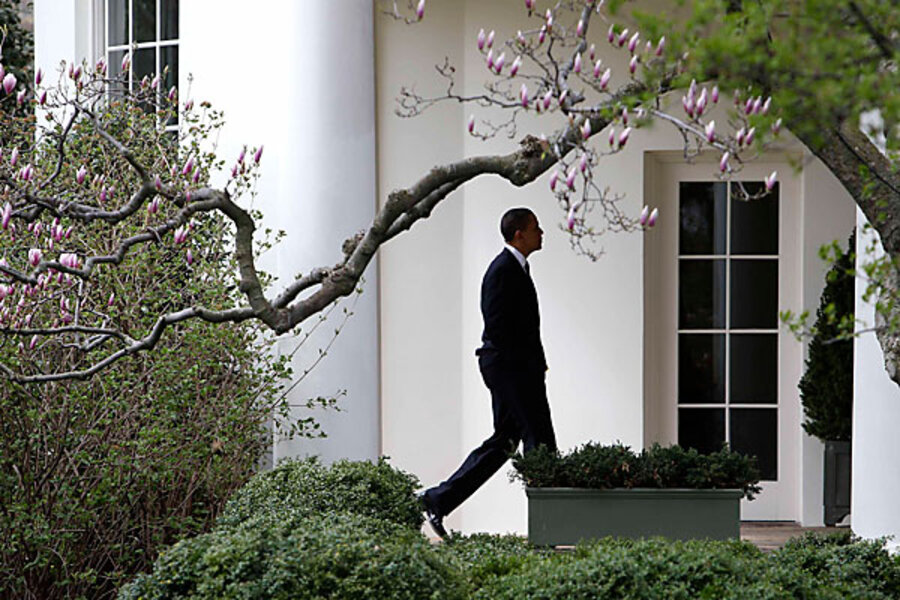Obama signs health care bill: Who won't be covered?
Loading...
The health care bill signed by President Obama Tuesday will extend medical coverage to millions of Americans who are now uninsured – but not to everyone.
Who won't get coverage under the law?
Among the still-uninsured will be illegal immigrants, plus people who choose to avoid the law's mandate to buy insurance – and pay a penalty as a result. It will also include some middle-class families who decide they can't afford coverage despite subsidies offered under the law. Depending on what insurance would cost, they may or may not owe a penalty.
Healthcare 101: What the bill means to you
Signs indicate that some 23 million Americans will lack insurance in 2019, after key provisions of the law have been in effect for as long as five or six years, according to a Congressional Budget Office (CBO) estimate. Meanwhile, the law would insure some 32 million people who otherwise would be uninsured in that year.
Those amount to ballpark guesses. But the estimates hint at an important general point, say health-policy experts: The law will extend an insurance net that is broad but far from universal.
Just how many people remain uninsured will depend on a few key factors. One is how regulators turn the law's broad provisions into specific rules governing insurance markets. Another is how individual Americans respond to the law. A smaller factor is how the Senate handles a pending "reconciliation" that could affect the shape of reforms.
Here are some groups who may lack insurance under the Obama law:
• Undocumented immigrants. This group won't be eligible for Medicaid or insurance subsidies on a healthcare exchange. In 2019, the CBO estimates, unauthorized immigrants will represent about 2 percent of a nonelderly population of 282 million people (or a bit less than 6 million people).
• People who don't sign up for Medicaid. The law will expand the ranks of those eligible for Medicaid to include people with incomes up to 33 percent above the official poverty line. But not all those eligible for Medicaid actually enroll.
• People who opt out, including younger workers. People who lack other coverage (Medicaid or employer-based coverage) will face a new mandate to purchase insurance. But some – perhaps a group skewed toward younger and single Americans – will choose to pay an annual penalty of $695 dollars or 2.5 percent of income, rather than a larger amount for insurance. The penalties would be capped at $2,250 per family as of 2016.
• People who feel insurance is unaffordable. This is similar to the "opt out," except that they may not owe a penalty. If insurance coverage would cost more than 8 percent of household income, people won't face a penalty for going without it. The law would provide subsidies that would assist people up to about four times the poverty level. For a family of four, that means federal assistance will phase out above about $88,000 in income.
Of course, lots of people find insurance unaffordable right now – a key reason that Obama has pushed for reform. "Hopefully there won't be as many people [in that group] because of the subsidies," says Judith Solomon, a healthcare expert at the Center on Budget and Policy Priorities in Washington.
Most of the people who now lack insurance, she notes, will qualify for either subsidies or for Medicaid under the law. The Senate reconciliation process will affect how large the insurance subsidies are and how much federal help people can get with other out-of-pocket expenses.
Many families will choose to buy insurance even though they have to spend more than 8 percent of income. Another option people have – if 8 percent of income won't buy a full insurance plan – is to buy high-deductible catastrophic coverage, Ms. Solomon says. (People age 26 or younger can opt for those catastrophic plans under the law, regardless of their income level, she adds.)
Ninety-four percent of all nonelderly Americans will be insured under the Obama plan, estimates the CBO, the nonpartisan scorekeeper for legislation. The agency also figures that 5 million Americans will buy coverage without any subsidy, choosing from policies offered on a new government-regulated exchange. For those who do get subsidies, the average amount granted will be $6,000 in 2019, the CBO estimates.





